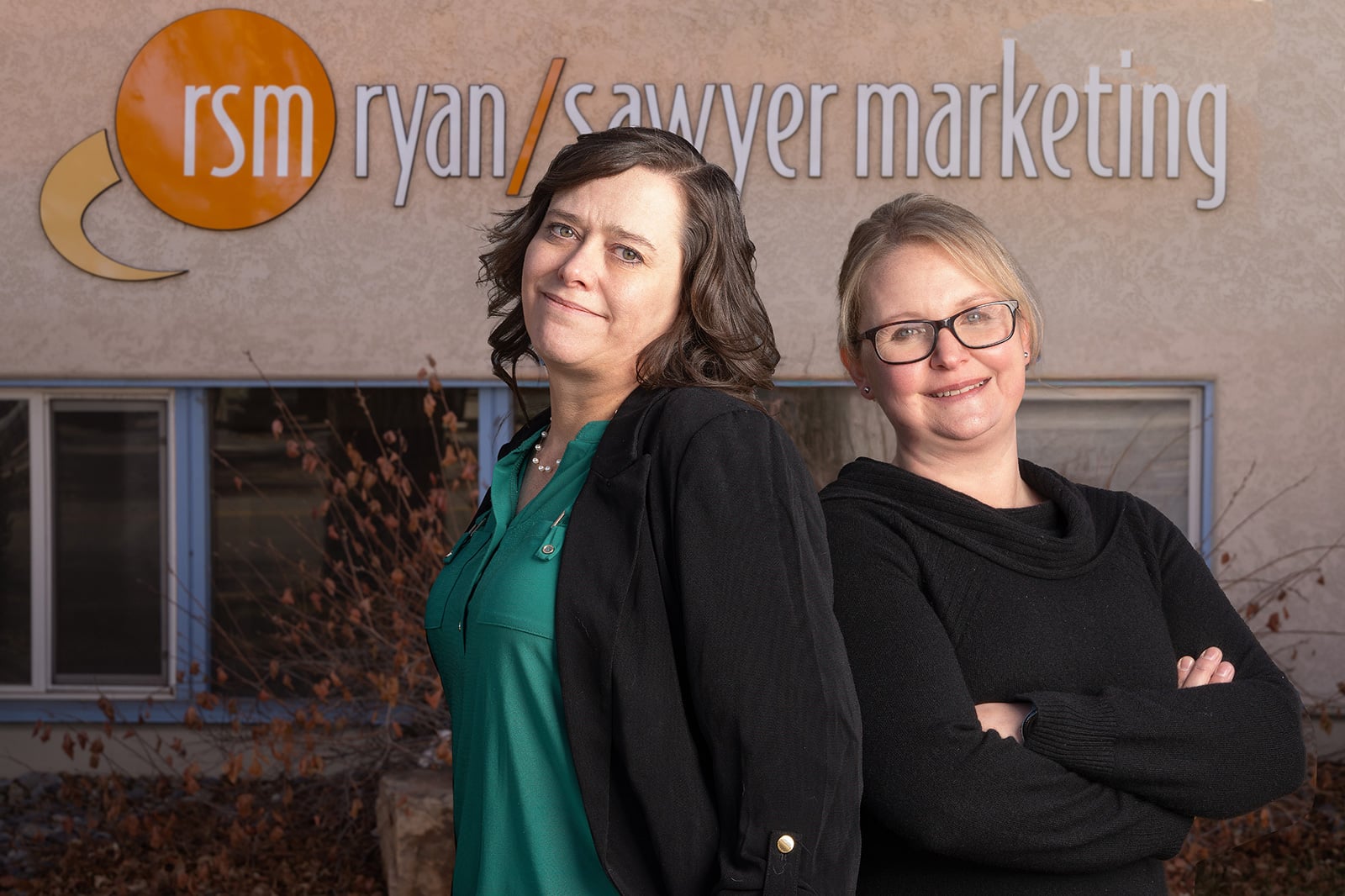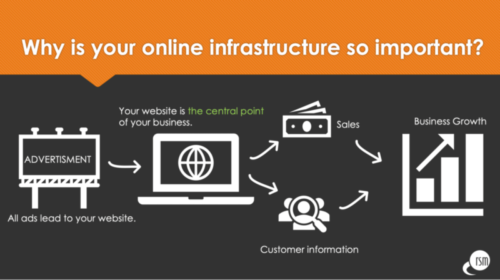Does your marketing infrastructure support your advertising?
Once upon a time a potential client came to us for help with a television advertising campaign. When he finished explaining his vision for said campaign, we paused to pull up his website for a quick review. It wasn’t . . . good. Without going into critical detail about everything that was wrong with it, let’s just say that it had clearly been neglected and was due for a major upgrade. We then Googled the most common search terms for his type of business. He finally appeared on page 10. Later that day I toured the physical location of his business and discovered old and worn out signage. We reviewed his collateral material and found it outdated and sporting a completely different logo. We politely suggested to him that before launching an expensive television advertising campaign he would be best served by investing first in his website, SEO, signage, collateral, etc. He not-so-politely suggested that we find another client. His mind was firmly set on that TV campaign. We wished him luck and showed him out. Unfortunately, this individual is not an exception. We encounter many businesses who come to us on a tactical plane, eager to move the needle by getting the word out through advertising without first taking the strategic step of assuring that the marketing assets are in place to support the campaign. We call this the marketing infrastructure.
Here in Grand Junction we live in a city physically connected to the rest of the world by bridges. You can’t travel by road to Grand Junction without crossing a bridge. It’s not an exaggeration to say that this infrastructure of bridges is crucial to the city’s economic well-being and perhaps its existence. We could spend millions of dollars advertising Grand Junction as a go-to destination to the rest of the world, but if they can’t get here that’s an obvious waste of resources. The same holds true for your business. So, what’s the condition of your marketing infrastructure? Is it prepared to support your advertising, public relations and promotional initiatives? How do you know? And where do you start? As the King in Alice in Wonderland said, very gravely, “Begin at the beginning.”
the world by bridges. You can’t travel by road to Grand Junction without crossing a bridge. It’s not an exaggeration to say that this infrastructure of bridges is crucial to the city’s economic well-being and perhaps its existence. We could spend millions of dollars advertising Grand Junction as a go-to destination to the rest of the world, but if they can’t get here that’s an obvious waste of resources. The same holds true for your business. So, what’s the condition of your marketing infrastructure? Is it prepared to support your advertising, public relations and promotional initiatives? How do you know? And where do you start? As the King in Alice in Wonderland said, very gravely, “Begin at the beginning.”
In marketing, the beginning is the first, initial contact or touchpoint with a prospective new customer. So, how does that contact happen? How do they find you? In today’s digital world, like it or not, 90% of prospects are going to find you through an internet search engine, most likely Google. And that initial contact is not going to take place in your store, office or place of business but in cyberspace, via your website. This is the bridge to your business and if your potential customers can’t find it, they can’t cross it. And if they do stumble across it but it looks crumbling and unsafe, they’re going to look for a better-looking bridge. This the cue for Captain Obvious to point out that developing a best-practices website that persuasively tells your brand story, compellingly presents your product or service and gives them an easy path to buy is probably a better use of your marketing dollars than launching a TV advertising campaign. The good captain would also suggest that implementing a robust and long-term Search Engine Optimization (SEO) strategy should be a priority.
Deeper within your marketing infrastructure lie other fundamental assets that must be invested in. After the initial touchpoint, what is the next step to conversion and how do your marketing assets help facilitate that process? If you’re purely an online business with only online conversion, you’re back to your website and how its back end is structured for fulfillment. Online shoppers expect a fast, easy and pain free experience in choosing the items they want, placing them into a virtual cart and checking out. If you’re a bricks and mortar business like say, an assisted living facility, the next step to conversion is probably an appointment to tour your facility. How does that happen? Can they schedule an appointment online or do they call and talk to a live person? Either way, an online scheduling function or a friendly person who is available and understands the importance of their job are both fundamental components of your marketing infrastructure that must be solidly in place.
Then, what happens when a prospect actually shows up at your place of business ready and willing to be converted into a customer? Does the logo on the door match the visual they saw on your website? Are they greeted promptly and courteously by a friendly person who understands your brand promise? If they’re given a brochure or other collateral material, is it of professional quality and does it accurately reflect, support and explain your brand promise? If you’re not sure of the answers to any of these questions, it may be time to bring in an outside consultant. At RSM we specialize in helping businesses understand their unique brand attributes, then audit the current state of the marketing infrastructure to ensure that the two align and are ready to support advertising initiatives. In our next blog we’ll talk about how your marketing infrastructure can help create the brand experience you’ve promised when you have succeeded in converting a prospect into a paying customer.





